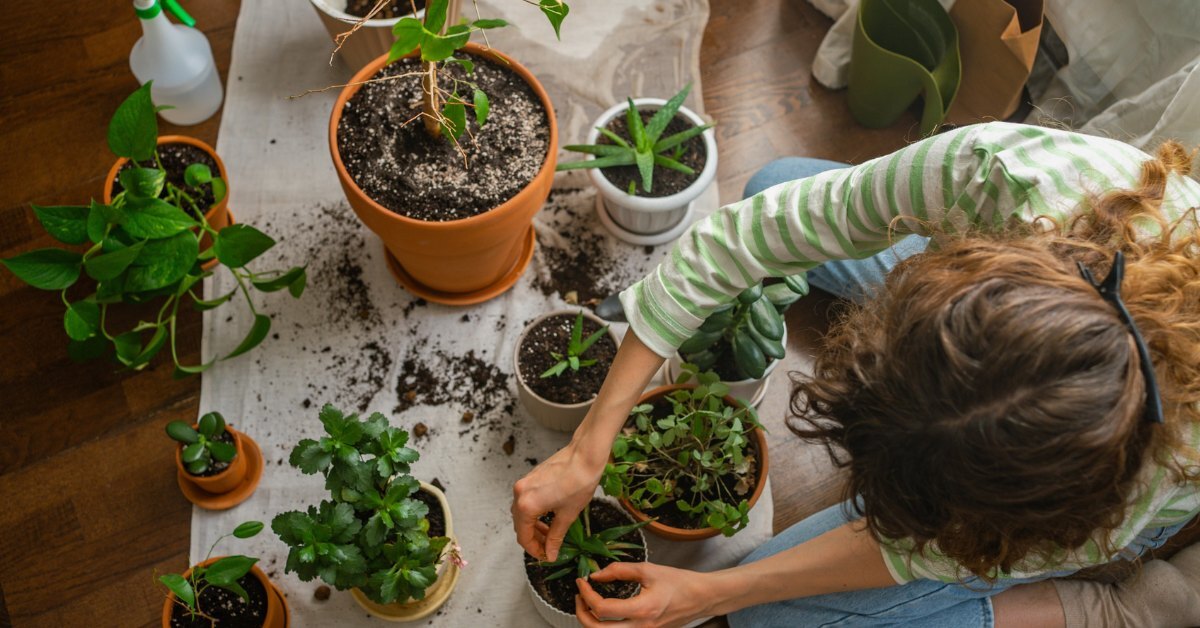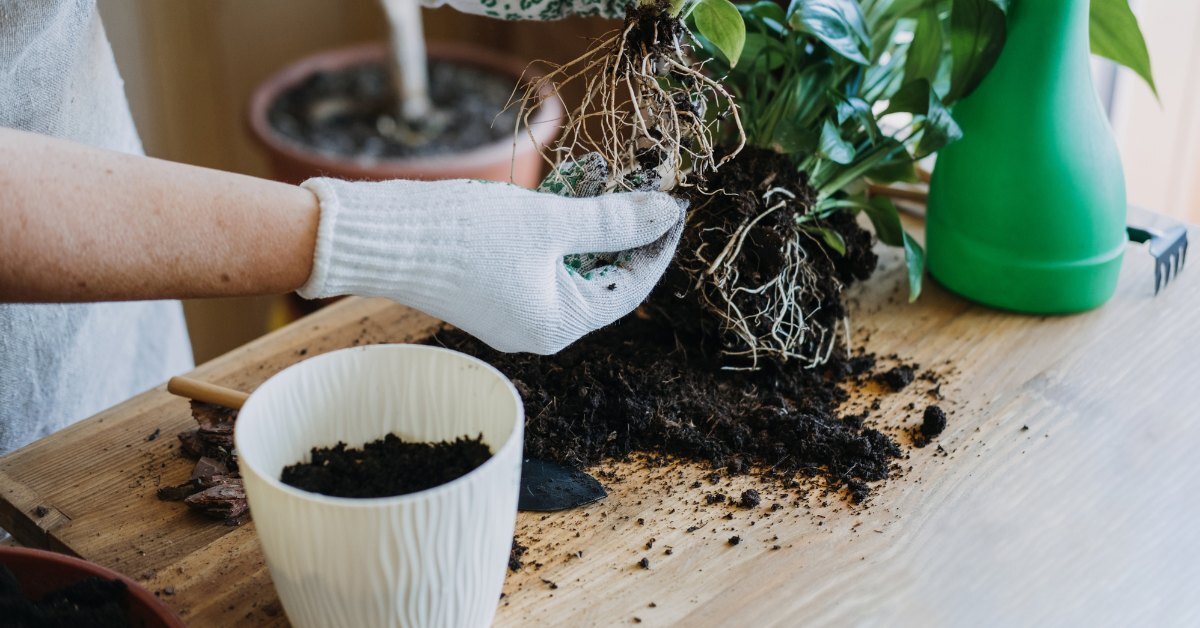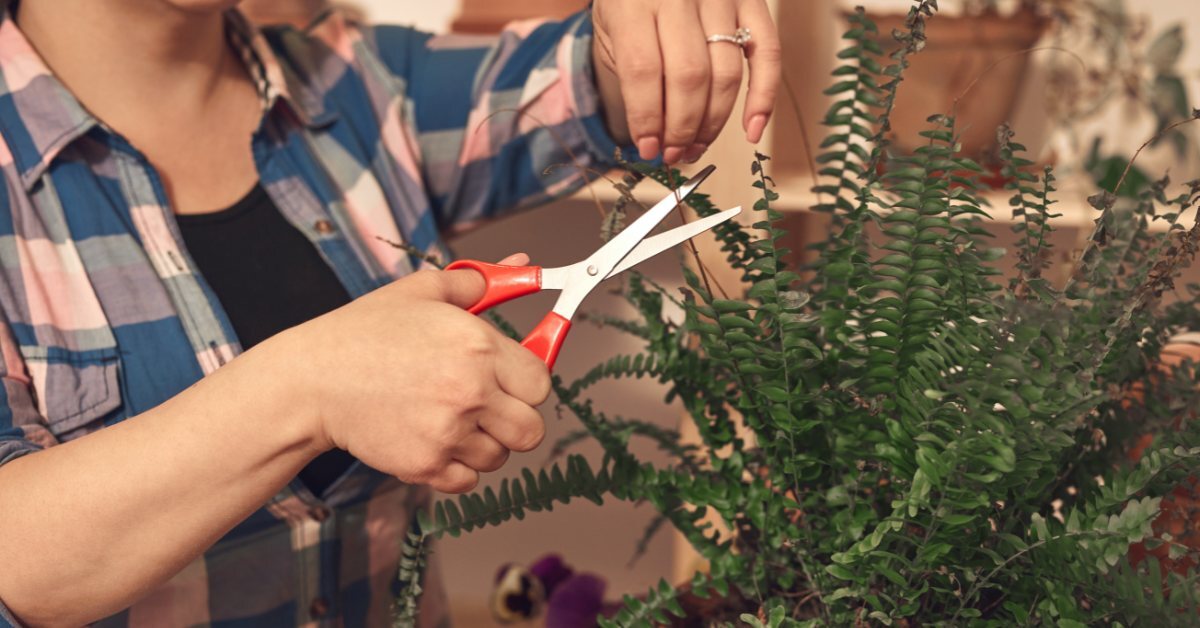Feature image courtesy: Shutterstock
If your garden looks worn out after weeks of rain — soggy soil, overgrown plants, and moss creeping into pots — you’re not alone. The monsoon brings life to your greens, but it also leaves behind its share of mess.
With roots struggling for air and soil turning heavy and waterlogged, now is the time for a reset.
August is the perfect window to revive your garden. Think of it as a seasonal refresh: clean up the soil, trim the wild growth, and repot where needed. Here’s how you can tackle the post-monsoon chaos and prep your little jungle for a healthy, happy rebound

1. Start with a clean-up
First things first — clear out the clutter. Dead leaves, rotting stems, and slimy bits stuck in pot corners need to go. This simple step improves airflow and helps prevent fungal infections and pest infestations.
Tips:
- Remove fallen leaves and debris from pots, beds, and crevices.
- Prune any blackened or damaged leaves.
- Disinfect your gardening tools before and after use to avoid spreading pathogens.
- Keep an eye out for mould — it often signals poor drainage.
2. Revive your soil before it turns sour
Post-monsoon soil is often waterlogged, compacted, or leached of nutrients. If left untreated, it can lead to root rot and poor plant growth.
Tips:
- Loosen the topsoil gently with a fork to help roots breathe.
- Add compost or well-rotted manure to replenish nutrients.
- Mix in neem cake or crushed dry leaves to improve drainage and reduce pests.
- Avoid chemical fertilisers immediately — give the soil time to recover.
- For potted plants, add a layer of cocopeat or dry sand to absorb excess moisture.

3. It’s repotting season (whether your plants like it or not)
Monsoon growth spurts often lead to overcrowding. If roots are circling inside the pot or peeking out of the drainage holes, it’s time to repot. And August is ideal for this.
Tips:
- Choose a pot one size larger with good drainage holes.
- Trim off old, soggy roots gently before placing the plant in fresh soil.
- Use a balanced mix: garden soil, compost, sand, and cocopeat in equal parts.
- Let the plant rest in semi-shade for a couple of days after repotting.
- Avoid overwatering. The moist soil is enough during the recovery phase.
4. Give your plants a well-deserved haircut
After weeks of rain, some plants grow wildly, making your garden look untidy and draining nutrients unnecessarily. Pruning encourages healthy growth, more flowers, and a neater look.
Tips:
- Trim leggy stems, dried flowers, and excess shoots.
- Use clean, sharp shears to make clean cuts.
- Focus on shaping the plant rather than over-pruning.
- For flowering plants, cut just above the node to promote bushier growth.
- Collect trimmings for compost.

5. Don’t forget preventive care
Monsoon might be almost over, but its humidity often leaves behind pests and fungal spores waiting to thrive. Mealybugs, aphids, snails, and mould are common post-monsoon problems, so a little vigilance now will save you trouble later.
Tips:
- Spray neem oil solution weekly (five millilitres of neem oil + a drop of soap in one litre of water)
- Sprinkle turmeric or wood ash around plant bases to deter snails and ants.
- Keep pots slightly elevated or on bricks to avoid water stagnation.
- Wipe indoor plant leaves with a damp cloth to prevent dust build-up.
New season, fresh start
Your garden has weathered the monsoon; now it needs your care to bounce back. A little cleaning, fresh soil, and a few thoughtful trims can make a big difference.
Think of this season as your garden’s reset button — a chance to remove what’s weighing it down and give it space to thrive. With these small steps, you’re setting the stage for lush, healthy growth in the months ahead.
No comments:
Post a Comment